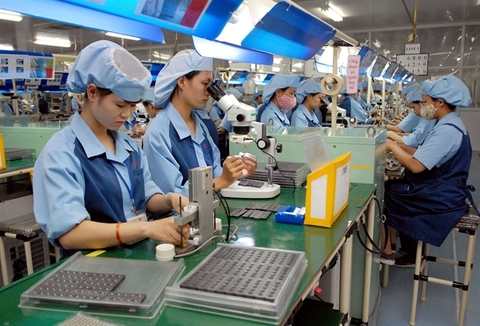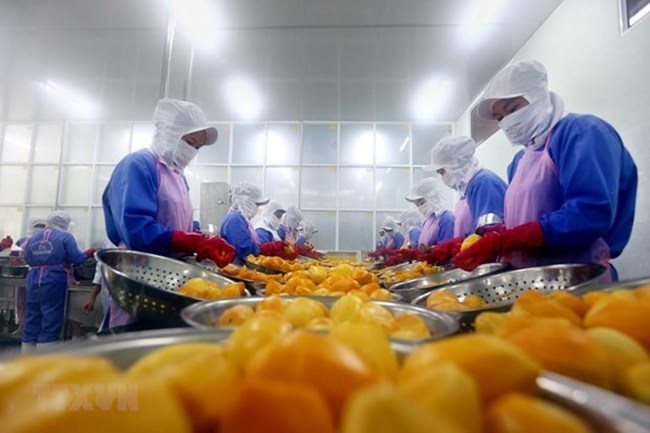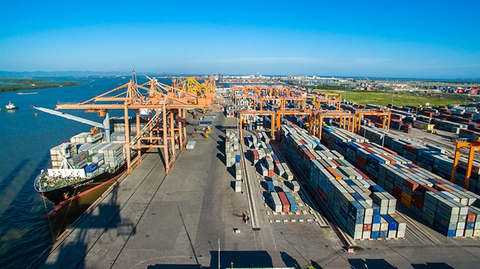More concern than joy
More concern than joy
The foreign direct investment (FDI) sector remains the main driver for Vietnam’s achievement of the record high trade surplus in the first 10 months of this year. The domestic sector also has significant contribution, scoring an export growth of 16.5% from the year-earlier period. At a glance, the figure is very optimistic, but a deep insight into it also raises concern.

According to the General Department of Vietnam Customs, Vietnam gained a trade surplus of US$1.86 billion in October. This is a surprise to economic experts, as the trade surplus is generally high in August and September of the year, the time when Samsung launches new products. Therefore, the surplus of nearly US$2 billion in October is seen as an abnormal development compared with the situation in previous years.
The accumulative trade surplus in the first 10 months of 2019 amounts to US$9 billion, much higher than the US$7.2-billion mark in the same period last year and the record high surplus to date. The big surplus has played a significant part in helping the State Bank of Vietnam (SBV) to purchase some US$15 billion year to date. It is also seen as a noticeable development given the forecast that Vietnam’s export growth in 2019 will be only 8-10%, much lower than the 2018 growth of 13%. In addition, the Sino-U.S. trade war remains inconclusive and trade protectionism tends to spread globally.
Main growth driver
There are probably many questions about Vietnam’s positive export result in the 10-month period. For example, what is the main driver for the achievement of the huge trade surplus? Apart from the surplus gained by the FDI sector, what is the contribution of the domestic sector to the huge surplus? What is the specific product which generates the most surplus? Is the achievement a result of the manufacturing shift from China to Vietnam? Is there any possibility that foreign goods are labeled Vietnam products for export to markets like the United States and Europe?
First, it must be affirmed that the FDI sector remains the main driver for the achievement of the record high trade surplus. Though the sector’s import-export balance in the first 10 months grew only 4%, it gained a surplus of US$28.5 billion, rising 10.6% from the year-earlier period. The surplus is generated mainly by enterprises in the processing and manufacturing sector, specifically producers of smartphones, electronics and components. India’s increase of tariff for electronic products and components as an effort to implement its “Make in India” strategy has forced Samsung to limit production of high-end smartphones and suspend manufacturing of some products like TV screens and phones in India to move to Vietnam early this year. As a result, the FDI sector has been able to maintain export momentum despite the global trade decline. Therefore, the contribution to the surplus by the production shift from China is insignificant.
While the FDI sector recorded an export growth of only 4.9% in the 10-month period, the export growth of the domestic sector surged 16.5% from a year ago. At a glance, the figure is very optimistic, but a deep insight into it raises concern. Exports of agro-, forestry and fisheries products, including seafood, vegetables and fruits, cashew nuts, black pepper, rice and rubber, reached only US$19 billion, down 6.2% from the year earlier period. The main reason for the decline is China, the traditional and main market of Vietnam, has suddenly turned to official trade for these products, instead of both official and border trades as previously. So, what is the driver for the domestic sector’s achievement of the 16.5% export growth? They are commodities like precious stones, phones and electronics. While the export of precious stones, mainly material gold, amid the higher global gold price than the domestic gold price is quite understandable, the domestic sector’s exports of phones worth US$1.9 billion or electronics worth up to US$3 billion, with respective year-on-year growth 1,807% and 238%, is completely unexpected and incomprehensible. What are the Vietnamese enterprises which have generated such huge export revenues? Are they Vinsmart, Bphone, Viettel or FPT? They could be the players, but it’s impossible to generate billion dollar exports within only a short time!
Sustainability counts
Vietnam has gained a trade surplus since 2012, except for 2015. This is a positive achievement, which partly helps the country maintain a current account surplus. The question is whether the trade surplus will be sustainable, specifically in 2020 and 2021?
The author thinks it may be possible, but the sustainability is uncertain. This means that Vietnam’s trade surplus is not really sustainable at the present time. The trade surplus is completely generated by a few FDI enterprises, while the domestic participation in the production value chain or the local content remains very low. Furthermore, the export of products disguised under Vietnam labels is certainly going on, as figures show that exports of phones and electronics by domestic enterprises have surged. This fraudulent practice will pose a big risk for domestic enterprises if management authorities do not take tough measures. As a consequence, Vietnam may face lawsuits and trade sanctions by other countries and trade partners.
















